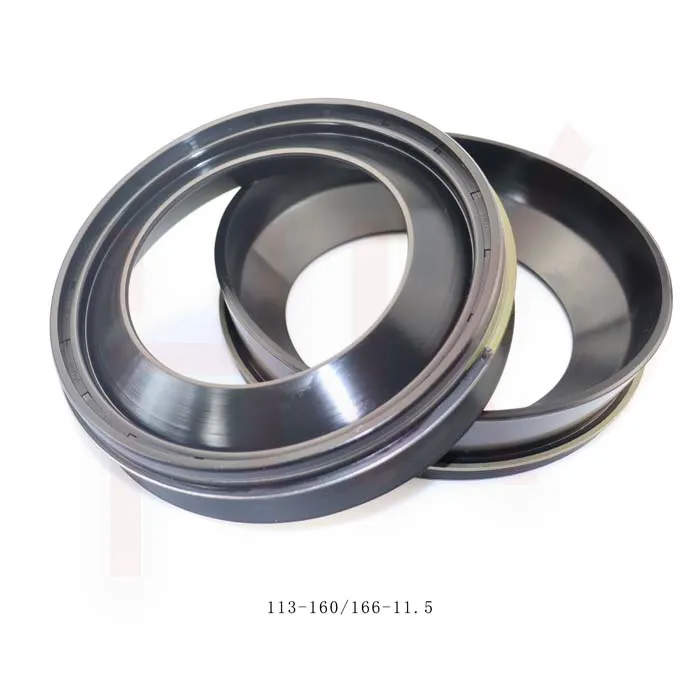Nov . 27, 2024 17:15 Back to list
Excavator Boom Cylinder Seal Change Guide for Improved Performance and Longevity
Excavator Boom Cylinder Seal Replacement A Comprehensive Guide
Excavators are powerful machines that play a crucial role in construction and earth-moving projects. One of the key components of an excavator is the boom cylinder, which controls the lifting and lowering of the boom. Over time, the seals within the boom cylinder can wear out due to continuous usage and exposure to various elements, leading to hydraulic fluid leaks and reduced efficiency. In this article, we will discuss the importance of seal replacement, the signs of wear and tear, and the step-by-step process of replacing seals in an excavator boom cylinder.
Importance of Seal Replacement
The seals in an excavator's boom cylinder are vital for maintaining hydraulic pressure and ensuring that the machine operates smoothly. When these seals begin to fail, it can result in several issues
1. Hydraulic Fluid Leaks A compromised seal can lead to significant loss of hydraulic fluid, resulting in decreased performance and potential damage to other hydraulic components. 2. Reduced Efficiency If the boom cylinder cannot maintain the required pressure, the excavator will struggle to lift loads effectively, leading to reduced productivity on the job site.
3. Increased Wear A leaking seal can cause internal components to wear out faster due to inadequate lubrication and increased friction.
4. Safety Hazards In severe cases, a failing seal can hamper the operator's control over the machine, leading to accidents and injuries.
Recognizing the importance of timely seal replacement can save costs, enhance efficiency, and ensure a safe working environment.
Signs of Worn Seals
Before diving into the replacement process, it’s essential to identify the signs that indicate the need for seal replacement
- Visible Oil Leaks Check for hydraulic fluid dripping from the boom cylinder. Pools of oil on the ground can signify a leak. - Unusual Noise Grinding or whining sounds during operation may indicate a lack of lubrication due to oil leakage. - Weak Boom Response If the boom fails to lift or operate smoothly, it may be struggling with hydraulic pressure losses. - Erratic Movements If the boom jerks or responds inconsistently, this could be a result of air in the hydraulic system caused by seal failure.
Step-by-Step Seal Replacement Process
excavator boom cylinder seal replacement

Replacing the seals in an excavator boom cylinder requires careful planning and execution. Here’s a detailed guide
1. Safety First Begin by ensuring that the excavator is parked on a stable, level surface. Engage the parking brake and turn off the engine. Use appropriate safety gear, including gloves and goggles.
2. Depressurize the Hydraulic System Before working on any hydraulic components, it's critical to release all pressure from the system to avoid accidents.
3. Remove the Boom Cylinder Disconnect the hydraulic lines and any mounting hardware holding the boom cylinder in place. Carefully remove the cylinder from the excavator, making sure to support it properly to avoid damage.
4. Disassemble the Cylinder Once you have the boom cylinder on a workbench, remove the end caps and take out the old seals. Keep track of the order and orientation of each component.
5. Clean the Components Thoroughly clean the cylinder barrel and other components to remove old oil, dirt, and debris. This step is crucial for ensuring the new seals seat correctly.
6. Install New Seals Carefully install the new seals in the correct orientation. Use a seal installation tool if necessary to avoid damaging the seals during the process.
7. Reassemble the Cylinder Once the new seals are in place, reattach the end caps and any other components removed during disassembly.
8. Reinstall the Boom Cylinder Place the refurbished boom cylinder back onto the excavator, reattach the hydraulic lines, and secure it with the appropriate hardware.
9. Test the System Start the excavator and engage the boom function to check for proper operation and any signs of leaks. Ensure that the machine responds smoothly without any unusual noises.
Conclusion
Regular maintenance is key to keeping an excavator operating efficiently, and seal replacement in the boom cylinder is a crucial part of this process. By recognizing the signs of worn seals and following the proper replacement procedure, operators can enhance the performance and longevity of their excavators, contributing to safer and more productive work environments. Whether you choose to tackle the replacement yourself or consult a professional, staying proactive about maintenance can pay off in the long run.
-
Reliable Oil Seal Wheel Hub Solutions for Industrial & Automotive Use
NewsNov.17,2025
-
Durable Front Hub Oil Solutions for Industry – HKAiSeal
NewsNov.17,2025
-
Wholesale Hydraulic Pump Motor Seal Kit A4VSO250 | In Stock
NewsNov.17,2025
-
Pump Seal Kits: Essential Components for Industrial Reliability
NewsNov.17,2025
-
TCV Oil Seal - Double-Lip, Spring-Loaded, High Temp & Wear
NewsNov.17,2025
-
Hydraulic Seal Kits: Reliable Solutions for Industrial Equipment
NewsNov.17,2025
-
Combined oil seal 659214 12001903B, fits 119990, NBR OEM
NewsNov.17,2025
Products categories
















